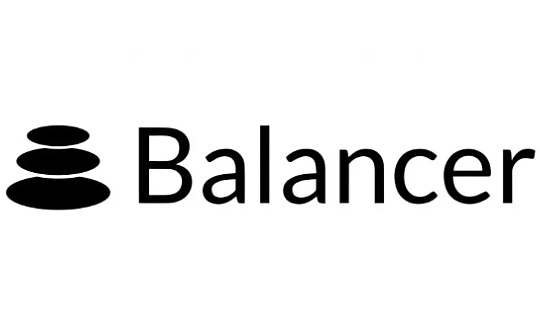
Author: Zhang Feng
In the noisy world of decentralized finance (DeFi), market makers, or liquidity providers (LP), are a silent but potentially very important role.The assets they pledge form the basis for all trading, lending and derivatives activity.However, this role has long been reduced to a passive, homogeneous revenue farming tool.
Until today, the x402 protocol inspired by the Internet HTTP 402 status code – “Payment Required” was born. It brings far more than the convenience of pricing and payment for digital services. It may completely reshape the identity and value capture method of market makers in the DeFi ecosystem, promoting a profound role transformation from passive capital providers to active service builders and key infrastructure operators of the digital economy.

1. x402 protocol optimizes on-chain payment paradigm
To understand the far-reaching impact of the x402 protocol on market makers, we must first recognize its underlying paradigm-level optimization of on-chain payments.Current blockchain payments, especially when involving different assets or cross-chain scenarios, are still a fragmented and cumbersome process.If users want to use non-native tokens to purchase a service, they usually need to go through the multi-step process of “confirm payment requirements -> go to the decentralized exchange (DEX) -> perform token exchange -> pay the target token”.This process is not only time-consuming, but also comes with high gas fees, potential price slippage, and complex operating thresholds.
The revolutionary nature of the x402 protocol is that,It builds a universal payments layer on top of a decentralized network.It abstracts and standardizes payment behavior.Any digital service – whether accessing a paidAPI, unlock a piece of high-quality content, or purchase an NFT – you can directly initiate a payment request to the user by embedding the x402 protocol.For users, the payment process is simplified to a one-time authorization confirmation.In the background, the agreement automatically completes the exchange and settlement of assets through smart contracts and advanced cross-chain routing technology.This is equivalent to creating an underlying system of “one-click payment” in the digital world, which encapsulates complex financial operations invisibly, greatly improves the efficiency of capital flow, and reduces the transaction costs of the entire society.This lays a solid technical foundation for the upgrade of the role of market makers.
2. The dilemma of traditional DeFi market makers and x402’s cost-effective solution
Against the backdrop of the smooth payment picture depicted by the x402 protocol, the current pain points of DeFi market makers are particularly prominent.Their dilemma is mainly reflected in two aspects:
The paradox of capital efficiency and ease of use.LP locks assets in a liquidity pool and aims to earn commission income.However, when they themselves need to consume on-chain services, their locked capital cannot be directly used for payment.They must go through a painful “self-disintegration” process: first remove some funds from the liquidity pool, bear additional gas fees and possible uncompensated losses, and then convert the withdrawn tokens into the required payment currency before completing the payment.This is tantamount to asking a reservoir manager to have to remove a section of water pipe in order to drink a glass of water.This process fragmentation severely restricts the actual effectiveness and flexibility of LP capital.
Single income model and homogeneous competition.The income of the vast majority of LPs in AMM pools depends almost entirely on transaction fees.This led them into an “involution” war over rates.In order to attract traffic, liquidity pools often have to keep rates to the lowest, and profit margins are continuously squeezed.The value of market makers is simplified to providing buying and selling orders with a small enough spread, making it difficult to build a differentiated competitive advantage.
So, how does the x402 protocol reduce costs and improve efficiency for market makers?The x402 protocol directly addresses the first pain point above and provides an elegant solution.It makes the liquidity provided by LP itself a universal payment capability.
When an LP encounters a service that requires x402 payment, he does not need to perform the cumbersome “exit-redeem-pay” process.He can directly authorize, routed by the x402 protocol’s smart contract, “pay” directly from his liquidity position.For example, an LP that provides liquidity in the ETH/USDC pool can directly use its pool share to pay for an API service fee denominated in DAI.The protocol automatically completes the complex exchange and settlement from pool shares to ETH, to USDC, and finally to DAI.
This process brings immediate benefits to market makers:
Operating costs plummeted,Combining multi-step operations into one step significantly reduces gas consumption and operation time.
Friction costs are eliminated,It avoids possible free losses caused by temporary withdrawal of liquidity and avoids slippage caused by secondary exchange on DEX.
Capital utility doubled,Locked liquidity is no longer a “frozen” asset, but “living” capital that maintains a high degree of payment flexibility.This greatly improves the overall efficiency and convenience of market maker capital.
3. Role transition from passive earning to active service
If cost reduction is the “immediate dividend” that the x402 protocol brings to market makers, then its deeper impact is that it enables market makers to transition from “passive profit making” to “active service”.This is mainly reflected in two new concepts:
Liquidity as a Service (LaaS).The x402 protocol allows any service to be clearly priced, so why can’t “liquidity” itself become a marketable service?Market makers can go beyond the traditional public pool model to create and price proprietary liquidity services with specific values.
For example, a team of market makers could create a “platinum-level” trading pair pool with excellent depth and extremely low slippage for an emerging token project.They can set an x402 access fee for this pool.If any third-party DApp or large-scale trader wants to enjoy the trading experience of this high-quality pool, in addition to paying standard transaction fees, they also need to pay a small, one-time access fee to LP.In this way, market makers are no longer just passive beneficiaries of trading activities, but direct sellers of the depth and quality experience they provide.They are able to directly quote and monetize the unique value they create (low slippage, ability to trade large amounts).
Tiered pricing and refined quotation strategies.Under the traditional model, LP’s quotation tools are very limited and mainly rely on setting transaction fee rates.The introduction of the x402 protocol provides market makers with the ability to conduct complex tiered pricing.
A market maker can design a strategy like this:
base layerIt is free and open to ordinary users, and standard transaction fees are charged.
premium tier,For large transactions that require “zero slippage” execution or are guaranteed to be completed within a specific time, LP can set an additional service fee based on x402.
This is similar to the difference between “economy class” and “business class” in the real world.Market makers can provide differentiated services and charge different fees based on the needs of users and the risks they bear.This refined operational capability will help excellent market makers get rid of low-level rate competition and establish core competitiveness based on service and technology.
4. Market makers may be embedded in key infrastructure of the digital economy
With the popularity of the x402 protocol, a digital economic landscape in which “everything can be paid and everything can be paid” will gradually unfold.In this process, market makers and the liquidity they provide will no longer be just “components” of DeFi, but will be upgraded to key infrastructure of the entire digital economy.
Future decentralized applications (DApps) may be highly dependent on the x402 protocol to achieve their commercialization.Whether it is in-app purchases for earning games, rewards on decentralized social platforms, or participation in prediction markets, a smooth micropayment system is required.The final realization of these payments must rely on the large, efficient and flexible liquidity network behind it.
By then, market makers with extensive asset coverage, excellent routing algorithms and deep capital strength will play a role similar to the “digital world central bank and payment network complex.”What they provide is not only the depth of trading pairs, but also the circulation system of the blood (liquidity) of the entire digital economy.Capital will naturally gather towards those liquidity pools that can unlock the most network services most conveniently and cheaply.The decision-making of market makers will change from “Which pool has a higher transaction fee yield” to “Which future core digital services can my liquidity support?”Their strategic position will be unprecedentedly enhanced.
5. Legal challenges in the process of paradigm shift
When market makers evolve from passive capital providers to active service pricers and critical infrastructure operators, they will also be placed under a more stringent regulatory spotlight, which lurks legal and regulatory risks that cannot be ignored.
Securities Law Compliance Issues.When a liquidity pool makes money through the x402 access fee model, and the pool’s income is highly dependent on the active management and marketing efforts of the market maker, will the regulatory agency identify its equity (such as LP Token) as an unregistered security?This characterization will impose a significant compliance burden.
Money Services Act/Payment License Risk.If market makers process payments on a large scale and on a regular basis through their liquidity pools, will they be considered a “money services business” or a “payment institution”?In many jurisdictions, engaging in such business requires applying for specialized licenses and complying with strict regulations such as anti-money laundering (AML) and know-your-customer (KYC).
Taxation and legal entity identification.New revenue models (such as access fees) create complex tax treatment issues.
At the same time, in order to deal with the above regulatory risks, market makers may be forced to shift from decentralized anonymous teams to registering clear legal entities, which will conflict with some of the native concepts of DeFi.
For market makers, the x402 protocol is by no means just a tool to optimize the payment experience.It is a key that opens the door for the transformation of the role of a market maker from a silent “earth” to an active “artery”.It releases the liquidity of market maker capital by maximizing payment efficiency; by introducing LaaS and tiered pricing, it gives it the ability to proactively create and capture value; and ultimately, by embedding it at the bottom of the digital economy, it elevates it to the strategic level of infrastructure.






